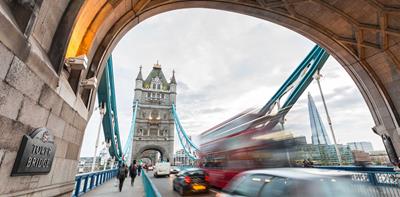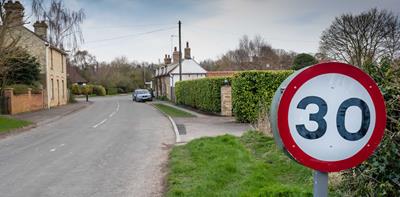
Driving on the motorway can be a nerve-racking experience, especially if it's your first time without a driving instructor in the passenger seat.
We’ve compiled an in-depth guide that covers all you need to know about how to drive on a motorway, from how to join it to exiting safely.
preparing to drive on the motorway
Here’s a checklist to follow if you’re preparing to drive on the motorway:
- Ensure your car is roadworthy by checking your lights, tyre pressure, oil levels, etc. You can find out more about keeping your vehicle in good condition in our essential car maintenance tips.
- Don’t forget to top up your fuel or charge an electric vehicle before setting off.
- Plan your route, so you know where and when you’ll be joining and leaving the motorway. Planning your entrance and exit means you can move over to the inside lanes with plenty of time, so you’re less likely to get flustered.
- Learn the motorway signs if you are a new driver or review them again if you need a refresher.
- Avoid any distractions, such as your phone, the radio or other passengers, especially if this is your first time on the motorway.
how to drive on the motorway
Although they’re among the UK’s safest roads[1], motorways can be daunting if you’re nervous about driving on one or it’s your first time.
One way to reduce the stress of motorway driving is to bear in mind the following tips:
- It’s essential to be aware of the speed at which traffic is moving, because you’ll need to match the motorway traffic as you increase speed to join it from the slip road.
- Motorways have 3 lanes - 2 and 3 are for overtaking slow vehicles in lane 1. Keep to lane 1, the left-hand lane, unless you are overtaking or leaving space for motorists on the hard shoulder. When you overtake, return to the left lane as soon as you can do so safely.
- You should never be a ‘middle lane hog’, which is when motorists stay in the central lane for too long. It’s illegal as it causes congestion and frustrates other drivers. You risk an on-the-spot fine of £100 and points on your licence.
- Keep an eye out for variable speed limit signs on overhead gantries on motorways – they can change for safety reasons, such as poor visibility due to weather or congestion ahead. The national speed limit on the motorway is 70mph. If the speed reduction sign shows a lower speed, you will be over the speed limit.
how to drive on smart motorways
A smart motorway uses technology to manage traffic volumes and reduce traffic congestion across all lanes. Although the government stopped building new smart motorways in 2023, there are still nearly 400 miles of smart motorways in England, so you need to know how to drive on them.
Know the rules on smart motorways:
- Smart motorways have variable speed limits to maintain traffic flow at busy periods or for any safety reasons, meaning you should obey the speed limit when it changes. The limit will show on digital signs over each lane.
- Look out for any red ‘X’ signs; they mean a lane is closed and you can’t use it.
- If there is only one sign working above a lane and your car is not travelling in it, do not ignore it. The speed limit shown applies to all the lanes.
- National Highways, which controls the signs, may also display warnings alerting you of traffic jams and hazards ahead.
- Some smart motorways still have a hard shoulder as indicated by a solid white line – don’t drive in this lane unless a police officer, a traffic officer or a sign directs you, as it is only for emergency use.
- Other ‘all-lane running’ have emergency refuge areas every 1.5 miles instead of a continuous hard shoulder. All lanes have the broken white line typical of running lanes.
how to join a motorway
New motorway drivers often feel nervous when joining the motorway from a slip road for the first time. Here are some pointers on how you can safely enter a motorway:
- Don’t slow down on the slip road – it can be dangerous to join the motorway at a slower speed than the traffic you’re merging with.
- As you approach the motorway, check your mirrors and blind spot for a safe gap in the traffic on the motorway. The motorway traffic has priority over vehicles in the slip road.
- Signal to other motorists that you intend to join the motorway traffic.
- Give way to traffic already on the motorway and adjust your speed to slip in smoothly. Some motorway drivers will move from lane 1 to lane 2 to allow drivers from a slip road into lane 1.
how to leave the motorway
When you want to leave the motorway, you should move into the correct lane in good time, so you do not have to cut across traffic.
The exit will be signposted to tell you that the exit is getting closer. Countdown markers alongside the motorway at 100-yard intervals show how close you are to the exit.
Remember to indicate to show other drivers you are leaving the motorway – signal left at the first countdown marker. Check your mirrors and any blind spots before taking the slip road. Reduce your speed if necessary.
Look out for a roundabout, traffic lights, sharp bends and reduced speed limits on the slip road or link roads between motorways.
how to overtake on a motorway
Overtaking on a motorway can be scary at first because the traffic is moving so fast, but it’s straightforward if you take it step by step.
- Check your mirrors and blind spot before overtaking a slower vehicle or changing lanes on a motorway, remembering to stay out of other drivers’ blind spots. Be especially wary of the blind spots of large vehicles.
- Don’t overtake on the left (known as ‘undertaking’) unless you’re in a queue of traffic and the right-hand queue is slower than your lane.
- Don’t tailgate the vehicle you want to overtake (or at any other time) – remember to leave a gap of 2-3 seconds at least between you and the car in front.
- Make sure the lane you want to move into is clear.
- After checking your mirrors, signal to other drivers that you intend to overtake.
- Remember to return to the left-hand lane as soon as it’s safe to do so, giving enough space so that the vehicle you’re overtaking and moving in front of does not have to slow down. You should be able to see the entire vehicle you have overtaken in your mirror.
- Be aware that heavy vehicles are limited to 50mph
Do not exceed the speed limit when overtaking on a motorway. It could lead to a fine of up to £2,500 and a driving ban, depending on the speed and offence.[2]
breaking down on a motorway
Breaking down on the motorway is never a stress-free experience. If you are unlucky enough to break down for any reason, such as a fault or lack of fuel, try to take your car off the motorway and into a service area.
If there’s no exit to leave the motorway, follow our tips on responding safely to a breakdown.
- First, pull into an emergency area or the hard shoulder of a motorway if your car has a problem like overheating or a puncture.
- Put your hazard warning lights on immediately.
- Turn the front wheels of your vehicle to face the verge rather than the traffic as a safety precaution. If the worst should happen, and a vehicle hits yours from behind, the car in front will crash into the verge or barrier, not into other traffic.
- Get out of the car, using the doors nearest to the verge and stay behind the barrier.
- Phone for help using your mobile phone or an emergency phone.
- Remain behind the barrier while you wait for help and stay away from the traffic.
You can find more details on what to do in our guide on breaking down on the motorway.
Learn about our car insurance.
FAQs
can you stop on a motorway?
No, you cannot stop on a motorway unless you must do so in an emergency or a police or traffic officer directs you to.
what is the hard shoulder?
The hard shoulder is a lane that runs along the left-hand side of the motorway.
who has priority when joining a motorway?
Traffic already on the motorway has priority when you join a motorway from a slip road.
are motorways safe?
Contrary to popular belief, motorways are among the safest roads to drive on.Tackling them just requires some knowledge and preparation.
When is the best time to drive on the motorway?
As a general rule, the best time to drive on the motorway is during non-peak hours between 8pm and 6am. The quietest time is from midnight to 6am.
Sources
[1] https://www.ageas.co.uk/solved/road-safety/dangerous-roads-map/


